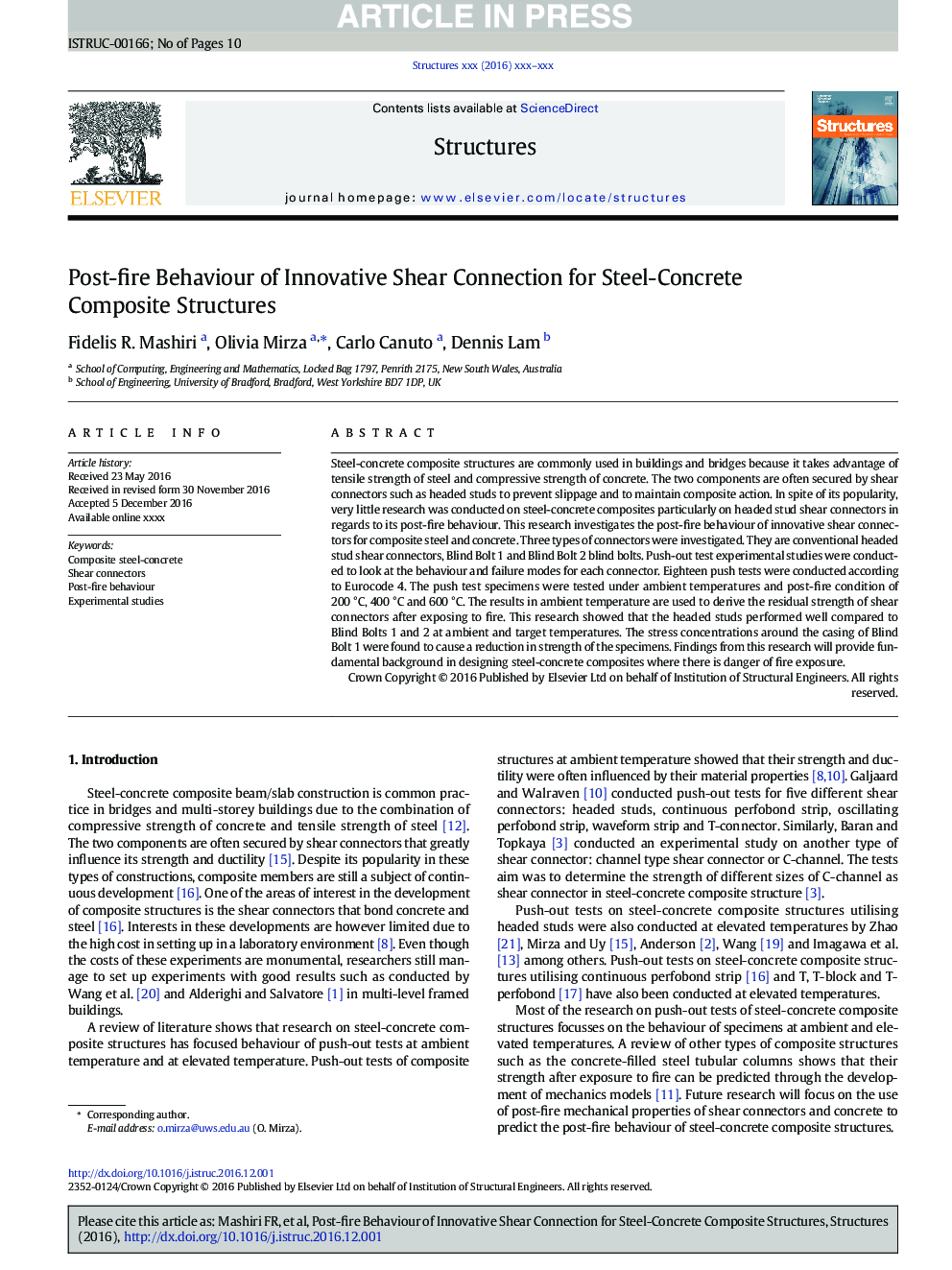| Article ID | Journal | Published Year | Pages | File Type |
|---|---|---|---|---|
| 4927952 | Structures | 2017 | 10 Pages |
Abstract
Steel-concrete composite structures are commonly used in buildings and bridges because it takes advantage of tensile strength of steel and compressive strength of concrete. The two components are often secured by shear connectors such as headed studs to prevent slippage and to maintain composite action. In spite of its popularity, very little research was conducted on steel-concrete composites particularly on headed stud shear connectors in regards to its post-fire behaviour. This research investigates the post-fire behaviour of innovative shear connectors for composite steel and concrete. Three types of connectors were investigated. They are conventional headed stud shear connectors, Blind Bolt 1 and Blind Bolt 2 blind bolts. Push-out test experimental studies were conducted to look at the behaviour and failure modes for each connector. Eighteen push tests were conducted according to Eurocode 4. The push test specimens were tested under ambient temperatures and post-fire condition of 200 °C, 400 °C and 600 °C. The results in ambient temperature are used to derive the residual strength of shear connectors after exposing to fire. This research showed that the headed studs performed well compared to Blind Bolts 1 and 2 at ambient and target temperatures. The stress concentrations around the casing of Blind Bolt 1 were found to cause a reduction in strength of the specimens. Findings from this research will provide fundamental background in designing steel-concrete composites where there is danger of fire exposure.
Keywords
Related Topics
Physical Sciences and Engineering
Engineering
Civil and Structural Engineering
Authors
Fidelis R. Mashiri, Olivia Mirza, Carlo Canuto, Dennis Lam,
